Wrapping a Cone with Crown Moulding
Practical math and hands-on approaches to a tricky crown moulding problem. February 28, 2012
Question
I hope to get a little help from someone with a problem I'm having. It's driving me crazy and I believe my theory is sound, but it's just not working in practice with the mock-ups I've made.
I want to wrap crown moulding around the top of a radius cabinet. Rather than using the stacking method I want to cut the crown on a radius and then bend it into place (I have a molder head on my Northwood). The crown has the same rise as projection, in this case 3.6115 (to the back side, 4.125 to the front), so it is a 45 deg angle. My top has a radius of 226.7365. This is the point that the back side, of the top of my crown will meet the cab top.
Currently I have the same radius at both points and in theory it seems like that should work, but in practice it seems to be a little off. I have AlphaCam and have wrapped cones with veneer and laminate using the same method many times with great success. I just don't understand where I'm going wrong here. Any help would be appreciated.
Forum Responses
(CNC Forum)
From contributor F:
It seems to me that you are trying to bend the wood against its grain in some directions and it is going to resist or fail to bend. It seems like you could have carved the curved crown out on your machine by the time you have gone through all the trial and error of trying to bend it.
From contributor T:
I think what you are saying is you want to "unroll" it and machine it flat. That can't happen with crown because it won't lay flat like a veneer. Your moulder head I assume doesn't tilt, but is a flat c axis? Draw and extrude in a 3D model and machine with a large bull end bit.
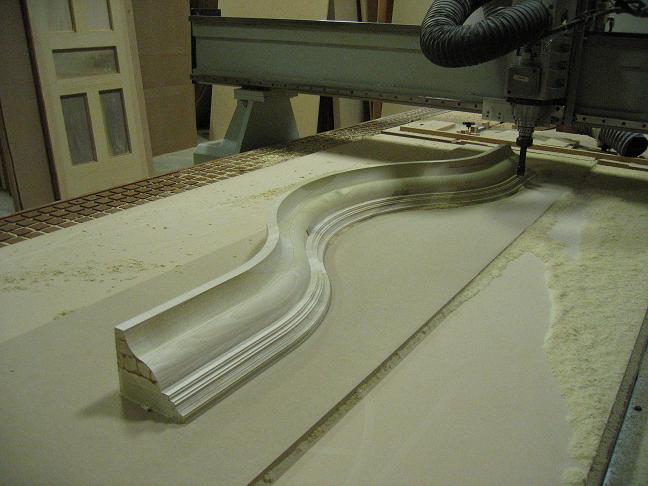
Click here for higher quality, full size image
From contributor W:
If your plan radius is 226.73 and your crown is set at 45 degrees, then the radius for a flat milled crown is the hypotenuse of a right triangle (320.65). This is termed a "sprung molding" and your crown molding is a cross section of a cone. Both horizontal and vertical bends can be calculated and a flat radius molding can be sprung into position. The only limitation is the ability of the material to make the required bend.
From contributor F:
After looking at your drawing, the thickest parts of your crown are going to be about .69", and the "rise" of your bend looks to be about 3". Mill a piece of flat stock that thickness, and see if you can bend it that far - I wouldn't think so, without steaming it.
Where I come from we call this an exercise in futility. Laminate up some stock carefully aligning the grain and cutting from the same boards to mill it out with a ballnose bit like MT shows in the picture. It will come out perfectly. Cut the returns on the machine at the same time to ensure that the profile matches.
From contributor C:
This is one half of a rope I did to circle the ega. It would be better to have an actual piece of the moulding profile to insure correct fit. Many programs can do this. I use Aspire/Vcarvepro.
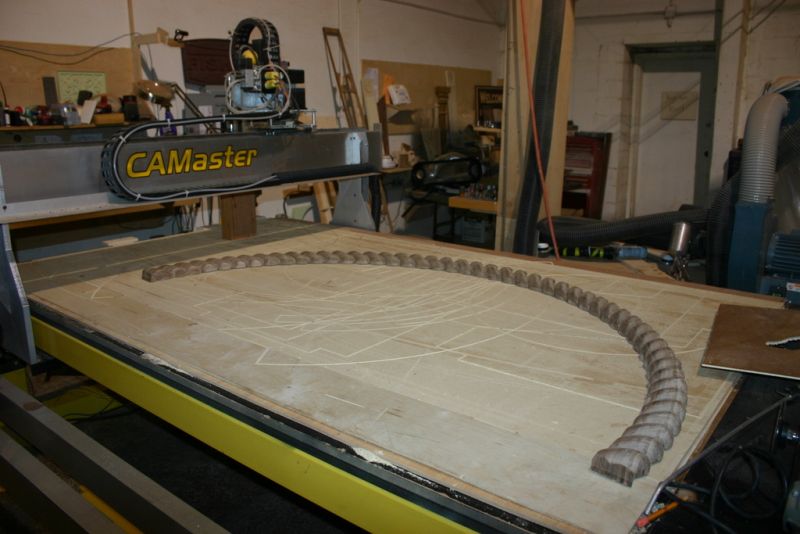
Click here for higher quality, full size image
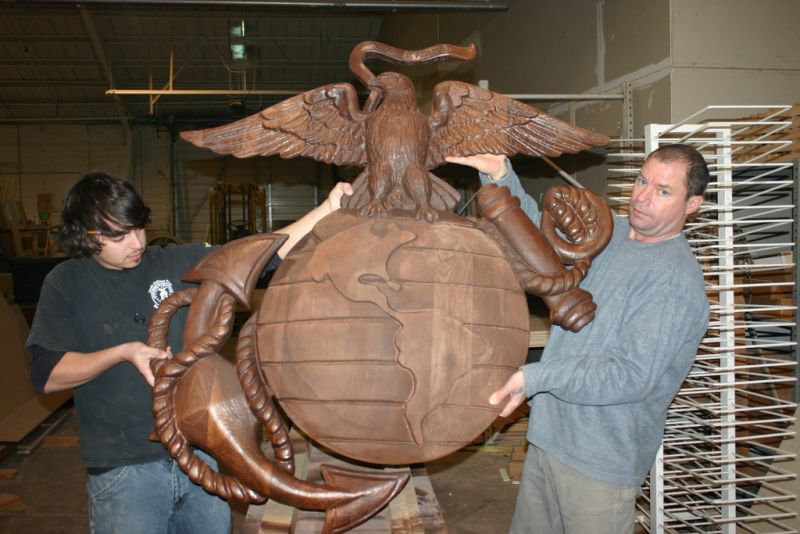
Click here for higher quality, full size image
From contributor C:
Separate the profile vectors and glue up block a hair bigger than needed.
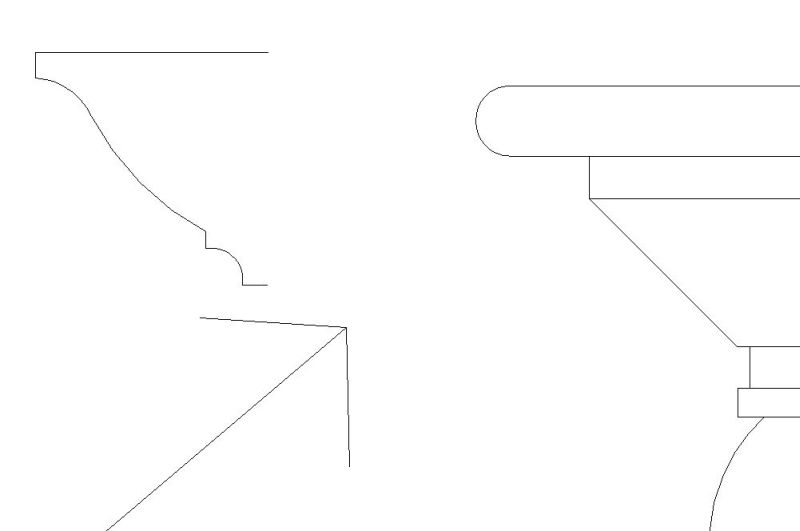
Click here for higher quality, full size image
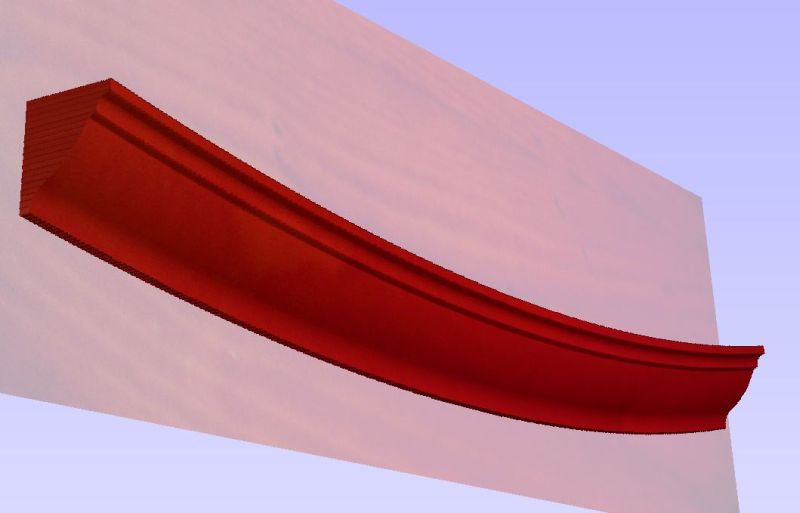
Click here for higher quality, full size image
From the original questioner:
It's times like these that I wished I had paid more attention in math class at school. I donít claim to understand what a hypotenuse is, but are you saying that my radius should somehow be 320.65"?
To the rest of you guys, I know it seems like I'm making a science project out of this, but I am resisting the stacking method because it will be a layered look of 1/4 sawn material, and even if I run straight in the same manner for the returns, it wonít match the crown (which is the same) on the ceilings and columns next to it. I'm not concerned about it bending into place. I can even kerf the back a little if I need to. Mitering is going to be tough though.
From contributor W:
Here is a drawing that might help.
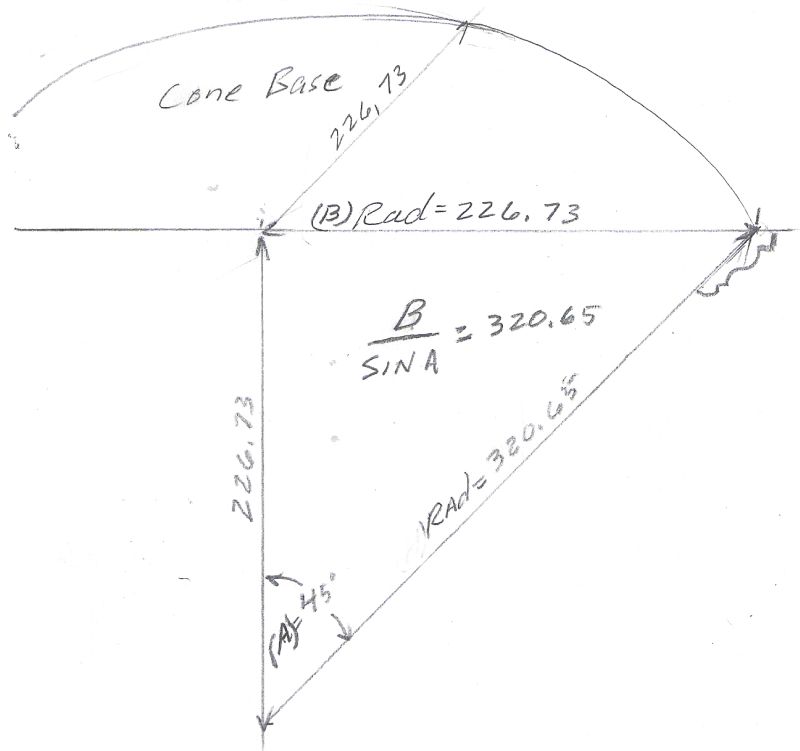
Click here for higher quality, full size image
From contributor T:
I don't claim to be the math wizard either, but what I do know is crown doesn't bend that way kerfed or not kerfed. Get to stacking, as gentle as the radius is you can probably do a minimal glue-up to keep from looking too much like a butcher block.
From contributor W:
To contributor T: Can a 3/4 inch board bend around a nearly 19' radius? No problem and this flat radius crown will wrap easily into position. I am no math wizard either just a woodworker who has done this before. Contributor C I absolutely love your superb naval insignia. Where did this end up?
From contributor C:
It is in the Officerís Club at Cherry Point, North Carolina.
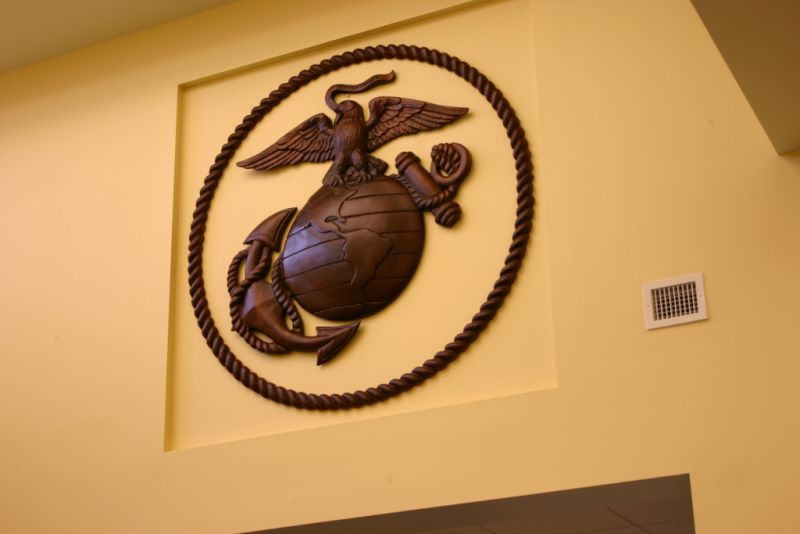
Click here for higher quality, full size image
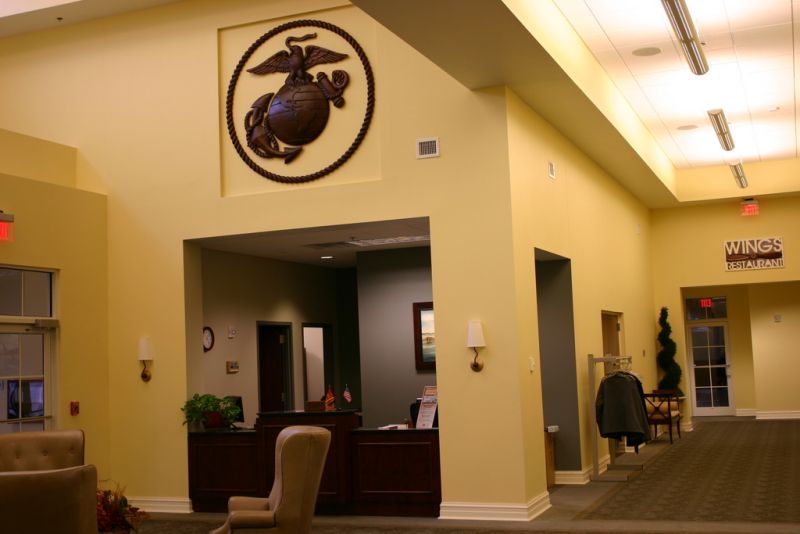
Click here for higher quality, full size image
From the original questioner:
Using Contributor Wís info I was able to make it work perfectly. It looks great.
From contributor C:
I am a bit more partial to using the CNC on most all of it. Itís kind of strange as up until three years ago I swore I would never own one. I took this picture recently.
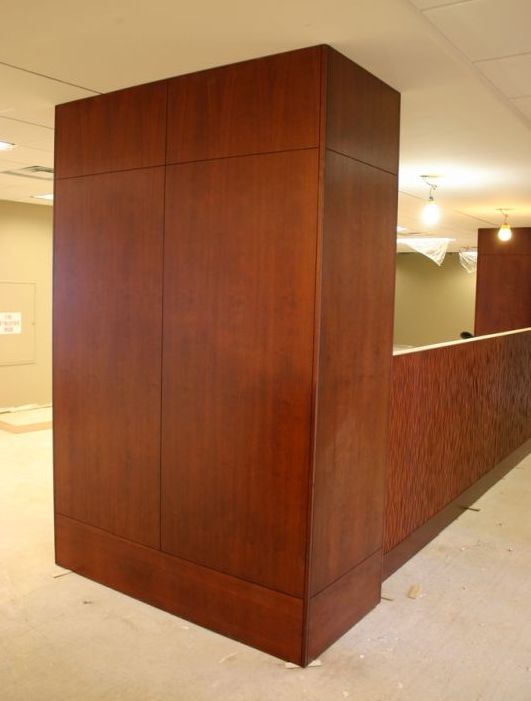
Click here for higher quality, full size image
http://www.woodweb.com/images_forums_public/cnc/IMG_8679.JPG
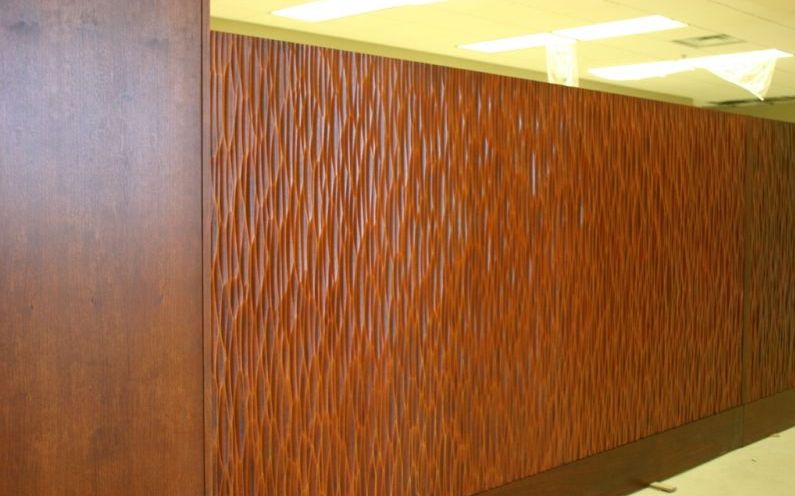
Click here for higher quality, full size image
From contributor I:
Boat builders run into this sort of thing all the time as they put planks on a lapstrake hull. When my former foreman (a boat builder) made a lapstrake altar for us he said the fitting is mostly trial and error. If you aren't used to this it's probably easier to make a glued up block.
If your rise is only 3", you could rip a piece of 8/4, flip it over, and face glue. Your outer edge would be bookmatched. Not a perfect grainmatch, but close. Watch the engrain rings and you could get a pretty well quartersawn molding.









